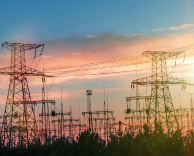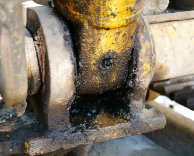Sub-Optimal Filter Performance | Common Causes and Solutions
Introduction
Filters play a crucial role in maintaining the efficiency and reliability of machinery and industrial systems. However, replacing filters does not always guarantee optimal performance. Several issues can arise that affect a filter’s ability to function properly, even after it’s been replaced according to specifications. In this article, we’ll explore common reasons why filters might perform sub-optimally and provide practical solutions to address these problems.
Importance of Proper Filter Selection and Installation
While choosing the correct filter based on specifications is essential, proper installation is equally critical. A seemingly correctly chosen filter can fail to deliver optimal results if installation issues or other factors affect its performance. Factors like filter media, the integrity of seals, and the condition of the bypass valve are key considerations that affect the overall performance of your filter system.
Common Reasons for Sub-Optimal Filter Performance
Here are some of the key issues that could impair filter performance despite proper filter selection and installation:
1) Collapsed Center Tube
The center tube of a filter provides structural support and ensures that the media inside the filter stays intact during operation. If the center tube collapses, the media may not be able to perform its filtration function effectively. This can result in increased pressure drops, flow restriction, or complete media failure.Solution: Ensure that the filter's center tube is made of high-quality, durable materials and properly installed. A collapsed center tube may require replacement or a different type of filter design to prevent collapse.
2) Inconsistent Media Quality
Filter media is responsible for trapping contaminants from fluids, gases, or other substances. If the quality of the media is inconsistent, the filter might not capture particles as effectively. This could result in decreased filtration efficiency or premature clogging.
Solution: Inspect the media quality regularly and choose filters from reputable manufacturers with strict quality control standards. Additionally, check the media for any visible signs of degradation or inconsistency during maintenance.
3) Damaged or Burst Filter Media
Over time, filter media can become fatigued, leading to tears, ruptures, or bursts. This can be caused by excessive pressure, improper handling, or contamination build-up that weakens the material. Once the filter media is damaged, it can no longer trap contaminants, leading to unfiltered fluid bypassing the filter.
Solution: Regularly inspect the media for any visible signs of damage, such as tears, punctures, or bulging. If damage is detected, replace the filter and ensure that the operating conditions are within the recommended limits.
4) Bypass at Filter Media Seam
In many filters, the media is joined at seams to form a continuous filtration layer. If these seams are not properly bonded, they may open up during operation, allowing contaminants to bypass the filter media.
Solution: Regularly check the filter media seams for signs of failure. Seams should be reinforced to prevent bypass, and adhesives should be checked to ensure they are resistant to high temperatures and chemicals.
5) Bypass Due to Adhesive Failure
The adhesive used in some filters to hold the filter media together can break down over time due to heat, pressure, or chemical exposure. This can result in the media coming apart, leading to reduced filtration efficiency.
Solution: Use high-quality, heat-resistant adhesives when assembling filter media. Consider investing in filters with welded seams or other methods that eliminate the risk of adhesive failure.
6) Damaged Gasket or O-Ring Seal
The gasket or O-ring seal ensures a tight fit between the filter and its housing, preventing leakage and ensuring that all fluids pass through the filter media. A damaged gasket or O-ring can result in fluid bypass, causing contaminants to escape filtration.
Solution: Regularly inspect the gaskets and O-rings for any cracks, cuts, or wear. Replace them as needed, and ensure the correct gasket material is chosen based on the fluid's temperature, pressure, and chemical properties.
7) Bypass Valve Jammed
A bypass valve allows fluid to flow around the filter if the filter becomes clogged or fails. If the bypass valve becomes jammed in either the open or closed position, it can result in either unfiltered fluid flowing through the system or excessive pressure build-up.
Solution: Inspect the bypass valve periodically for proper operation. Clean and lubricate the valve as needed and replace it if it shows signs of damage.
8) Installation Errors (Incorrect Flow Direction)
Filters must be installed with the correct flow direction to function properly. If a filter is installed incorrectly, the fluid may bypass the filter media or flow in a way that the filter was not designed to handle.
Solution: Always ensure that filters are installed according to the manufacturer’s instructions, particularly regarding the correct flow direction. Marking the flow direction on the filter can help prevent installation errors.
9) Bypass Valve Leakage
In some cases, the bypass valve may leak, causing unfiltered fluid to flow through the system. This can happen due to wear, corrosion, or faulty design.
Solution: Test the bypass valve periodically for leakage. If leakage is detected, inspect the valve for wear and tear, and replace it if necessary.
10) Misaligned Filter and Seal
A misalignment between the filter and its sealing surface can cause leakage and inadequate filtration. Even a slight misalignment can significantly reduce the efficiency of the filtration system.
Solution: Ensure proper alignment during installation. Check that the filter and sealing surfaces are clean and free of debris that could cause misalignment.
Best Practices to Avoid Filter Performance Issues
To avoid the common causes of sub-optimal filter performance, consider the following best practices:
- Regularly maintain and inspect filters for signs of wear or damage.
- Ensure correct installation, including flow direction and sealing.
- Use filters from trusted manufacturers with high-quality materials.
- Follow manufacturer guidelines for operating conditions and replacement intervals.
- Keep the filtration system clean and free from contaminants that can damage the filter.
Conclusion
Sub-optimal filter performance can be caused by a range of issues, even after a filter replacement. Identifying and addressing the root cause is essential to maintaining system efficiency and avoiding downtime. By regularly inspecting filters and following best practices, you can ensure the long-term effectiveness of your filtration systems.
FAQs
Get your filter check today, Call +91 7030901266
We at Minimac Systems Pvt Ltd. provide services of Total Lubrication Management and Lubrication Consulting that helps you optimize your Lubrication needs. Minimac stands for MINImum MAChinery Maintenance.





